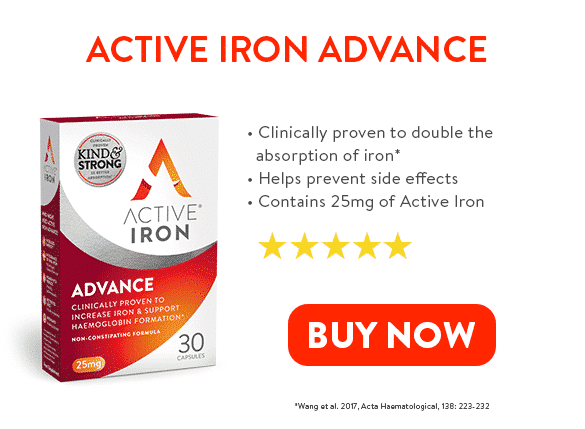Ever wonder if it’s ok to still hit the gym when your period arrives? Many women ditch their workouts during that time of the month, but should you do this, or is there a benefit to exercising during your menstrual cycle? Renee McGregor, leading sports nutritionist and eating disorder specialist, offers the lowdown on what to consider before exercising during your period.
Some things are unavoidable in life: death, taxes and your period.
When your time of the month brings symptoms like cramps, bloating, and fatigue, the idea of going to the gym might seem like the last thing you want to do. On the other hand, if you’re deep into a rigorous training programme and looking forward to a week of intense workouts, getting your period might feel like a frustrating hurdle standing in the way of your fitness goals. You might even feel tempted to power through the discomfort just to stick to your exercise regimen.
So, the question is: when is it right to carry on training, and is there a time when you should focus on rest and recuperation?
Know your body and learn to listen
Menstruation is a very complex subject, both physiologically and psychologically. There’s no way to standardise it all, and every woman will have a different experience when it comes to their period and its impact on sporting performance, as well as their body and even mind.
Understanding these individual differences is crucial for women to manage their menstrual health effectively, and manage how they work out around it. “Some women will feel really uncomfortable, they’ll have quite bad pain, they can have heavy legs. Personally, I’ve always noticed that I get really short of breath, normally two or three days before my menstrual cycle, and I’ve had that my entire adult life. When I get it, I know when my period is coming, because I’ll go for a run and I’m like, okay, I’m struggling today and can accept it’s just one of those things. I think there’s many symptoms that, if you track your period and understand your body, you can manage more effectively,” said McGregor.
“If you are a female athlete that has tracked your cycle, and you’ve identified maybe where you feel at your best, and where you feel a little bit more fragile, shall we say? I think that’s a good starting point for managing your training and performance.”
By learning to listen to your body and understanding how your menstrual cycle affects energy levels, strength, and endurance, you can adjust your training and competition schedules to perform at your best. In doing so, you’re empowered to take control of your health and make informed decisions about your training and recovery.
Of course, there are plenty of other things that can affect your menstrual cycle and how you perform during training. As a performance nutritionist working with Olympic, Paralympic and Commonwealth athletes, Renee McGregor has seen firsthand how lifestyle factors can really make an impact.
“Even if you did have any sort of standardisation for menstruation in female athletes, then obviously lifestyle impacts it as well. So if you’re not sleeping well, which can be common during the luteal phase due to temperature control, that will affect your hormone levels. Likewise, if you’re not eating well, or if you’re feeling any kind of stress, we know that will also have a massive effect on you physically and even psychologically.”
Managing expectations
It can be tempting to push harder if you feel like you’re not performing at your highest level, or you just aren’t hitting the desired numbers during your workout, but McGregor says this carries its own risk.
“What I always say to the women I work with is that you don’t have to be able to perform in the same capacity every day, day in and day out. And I think there’s this kind of expectation that you should be able to feel the same all the time and see the same level of performance,” added McGregor.
“Take for example, you’re doing a track session every week, and you’re working at quite a high, hard intensity level. Regardless of the sport, you may find that in the first two, maybe even three weeks of your menstrual cycle you’re performing great, you have loads of energy and you’re feeling good. But then you might find that during the last week, or maybe the last two weeks, depending on the individual, that you just can’t quite get the numbers.
“When you think about female athletes, they have a very specific mindset, and it tends to be very perfectionistic and high achieving. So a normal physiological reaction to reduced numbers is thinking that you aren’t working hard enough, but understanding and accepting the impact of your menstrual cycle can help shift to a mindset of acceptance that these dips in performance are going to happen.
“Just because you aren’t hitting the same numbers, or not feeling as good, it doesn’t mean you’re not getting the same training effect. The best advice I can give athletes is to appreciate that it’ll probably fluctuate.”
Nutrition and hydration
During the luteal phase of the menstrual cycle, your metabolic rate tends to increase. This can lead to elevations in your core temperature, affecting the perceived exertion of training and increasing the potential for dehydration.
“As well as staying hydrated, you should also ensure that you are getting the correct intake of nutrients,” advises McGregor. “Particularly in endurance sports, you may need higher amounts of carbohydrates, or even higher amounts of sugar in your diet to meet energy requirements. Essential fatty acids and protein can also help with symptoms during your menstrual cycle.”
Proper nutrition not only supports hydration and energy levels but also helps address the increased iron needs during menstruation.
Low iron is common in athletes, particularly those involved in endurance sports. It has been reported to impact 3-11% of male athletes and 15-35% of female athletes¹. Naturally, female athletes are at further risk of low iron due to monthly menstrual losses.
Monthly periods are the most common cause of iron loss, with women of childbearing age needing almost two times more daily iron than men². While this varies from female to female, most women will lose 20-90 ml of blood during their period. Those who have heavy periods, can have losses in excess of 160ml during their monthly cycle³. Studies have shown that 1 in 3 women suffer with heavy menstrual bleeding*.
In order to prevent iron deficiency, food and diet should always come first. The best sources of iron are animal sources, such as red meat, poultry, and fish, but many female athletes have reduced their consumption of foods such as red meat for other health reasons. Egg yolk is also a good source but sometimes due to the protein in the egg, absorption can be reduced.
Plant-based sources of iron include pulses and legumes, dark green leafy vegetables, nuts, and seeds, and foods fortified with iron such as cereal and bread, except wholemeal. In general, iron from plant-based options is much more difficult to absorb, so plant-based athletes may need to pay particular attention to their iron intakes.
Iron supplementation is also a key consideration in both male and female athletes. It can increase ferritin levels – a protein that stores iron in the body, primarily in the liver, spleen, and bone marrow – and help the body maintain its energy levels, making you feel less tired and fatigued.
Injuries: know the risk
The link between menstruation and injuries in female athletes is an area of growing interest and one which has seen a great deal of research conducted.
Hormonal fluctuations during the menstrual cycle can impact factors such as ligament laxity, muscle strength, and coordination, which may increase the risk of certain types of injuries. Some studies suggest that female athletes are more prone to ACL injuries during the ovulatory phase due to increased ligament laxity.
Additionally, menstrual cycle-related symptoms such as fatigue, bloating, and mood changes may affect training intensity and technique, potentially influencing injury risk.
“While there may be a slight increase in injury risk at certain times during the menstrual cycle due to hormonal influences, individual differences mean that the experience can vary widely between different women. It’s essential to be mindful of your body’s signals and adjust your activities as needed to reduce the risk of injury.”
Don’t always trust the numbers, trust your body
With so much sports technology at our fingertips, it can be easy to get sucked into the vortex of data at our disposal. Whether that’s tracking heart rate variability, monitoring sleep patterns, analysing workout intensity, or logging nutritional intake, the sheer volume of information can become overwhelming.
“We have so much sports tech these days, that we absolutely believe in the numbers that our smartwatches and other trackers are telling us. When, actually, the reality is they’re grossly underestimated in a lot of cases, and particularly with women during their menstrual cycle. The amount of energy burnt, and therefore needed to refuel, is often much higher than what’s quoted. This is where a lot of female athletes can unintentionally under fuel,” added McGregor.
While this data can be incredibly valuable for optimising athletic performance and health, it’s important to remember that understanding and listening to your body’s signals is equally crucial – particularly when it comes to your menstrual health.
¹Sims. S. et al; High Prevalence of Iron Deficiency Exhibited in Internationally Competitive, Non-Professional Female Endurance Athletes—A Case Study Int J Environ Res Public Health; 2022. ²https://www.nhs.uk/conditions/vitamins-and-minerals/iron/. ³Heavy Periods: Overview Informedhealth,org; 2017. *Heavy periods. WOMEN’S HEALTH CONCERN FACT SHEET; 2022. www.womens-health-concern.org

Renee McGregor
BSc (hons) PGDIP (DIET) PGCERT(sportsnutr) RD BASES
Renee McGregor is a leading Sports and Eating Disorder Specialist Dietitian, boasting two decades of expertise in clinical and performance nutrition, and health advisor for Active Iron.
Her impactful journey includes supporting athletes globally and contributing to Olympic (London, 2012), Paralympic (Rio, 2016), and Commonwealth (Queensland, 2018) teams. As the Nutrition Lead for the English and Scottish National Ballet, she guides nutritional and clinical aspects for both performance and health.
Read more about Renee here.


